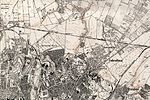National Museum of Romanian Aviation
1990 establishments in RomaniaAerospace museumsMuseums established in 1990Museums in Bucharest

The National Museum of Romanian Aviation (Romanian: Muzeul Național al Aviației Române) is an aviation museum owned by the General Staff of the Romanian Air Force. The museum was established on 2 March 1990, being initially located on the Otopeni military base. In 2006, it was moved in the hangars of the former Pipera Airport. The museum also manages the "History and Museography of Rockets and Space Research" section of the Hermann Oberth memorial house in Mediaș.The current director of the museum is Comandor Ion-Doru Micu.
Excerpt from the Wikipedia article National Museum of Romanian Aviation (License: CC BY-SA 3.0, Authors, Images).National Museum of Romanian Aviation
Șoseaua Fabrica de Glucoză, Bucharest
Geographical coordinates (GPS) Address Phone number Website External links Nearby Places Show on map
Geographical coordinates (GPS)
| Latitude | Longitude |
|---|---|
| N 44.476938888889 ° | E 26.110769444444 ° |
Address
Muzeul Aviației
Șoseaua Fabrica de Glucoză 2-4
013695 Bucharest (Sector 2)
Romania
Open on Google Maps






